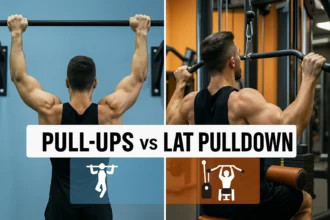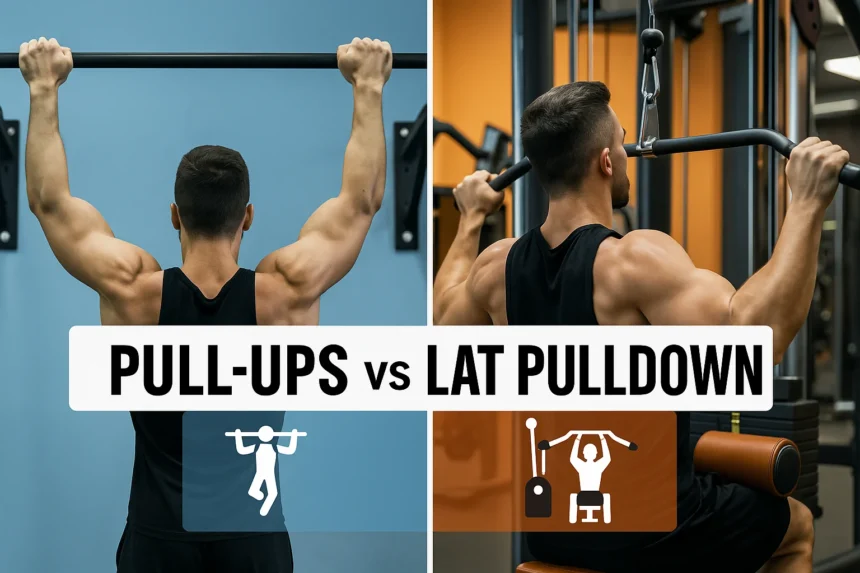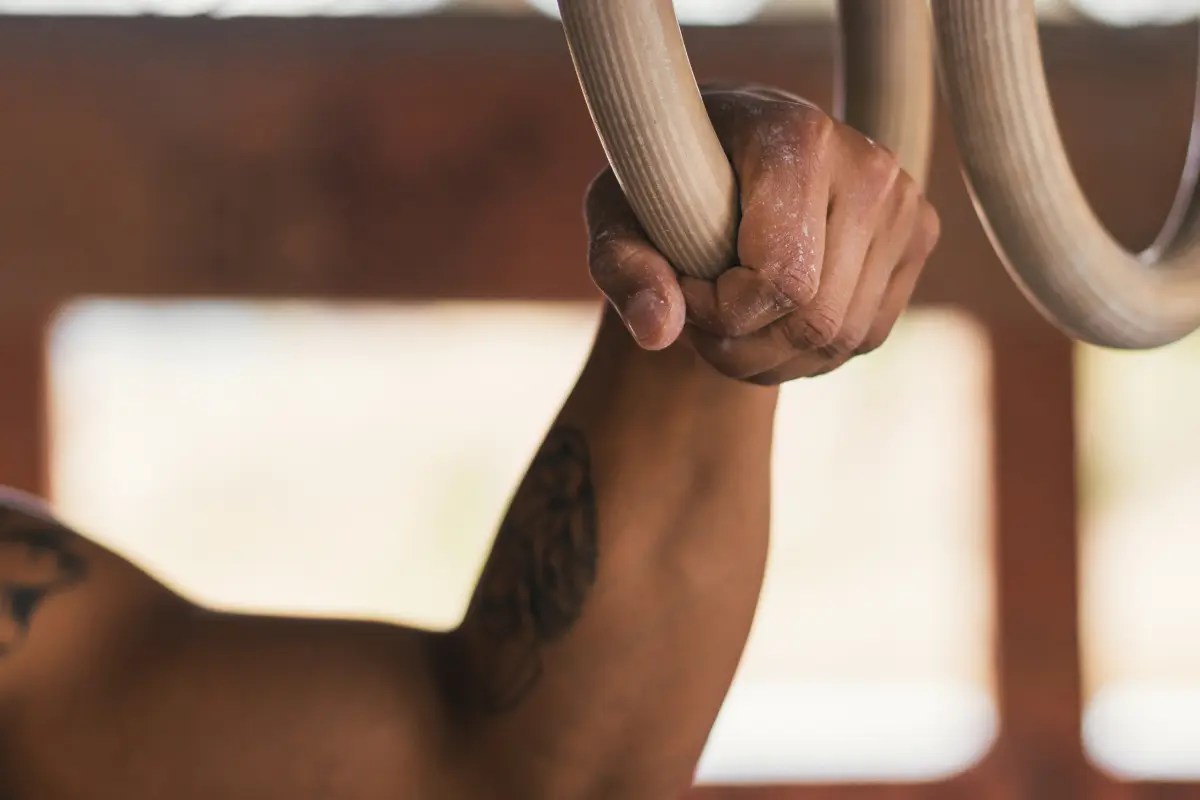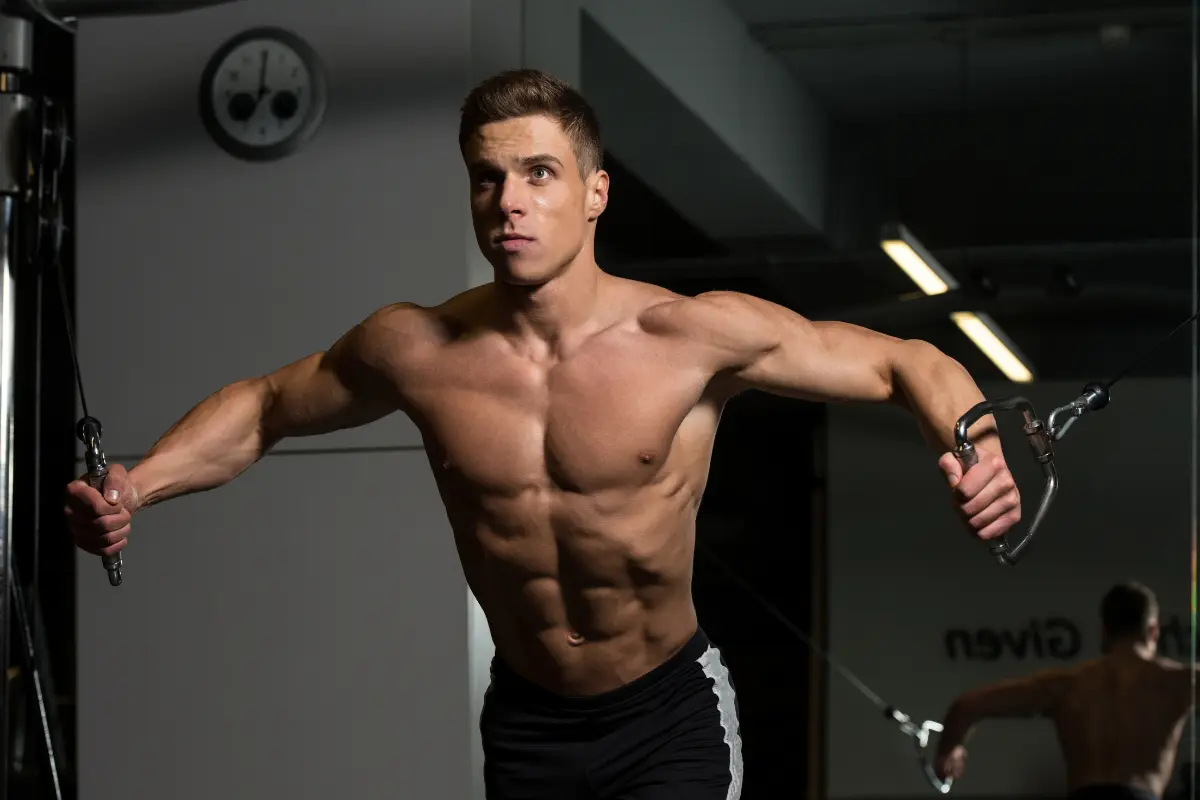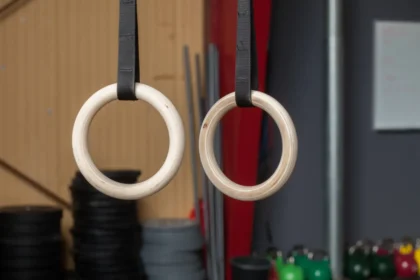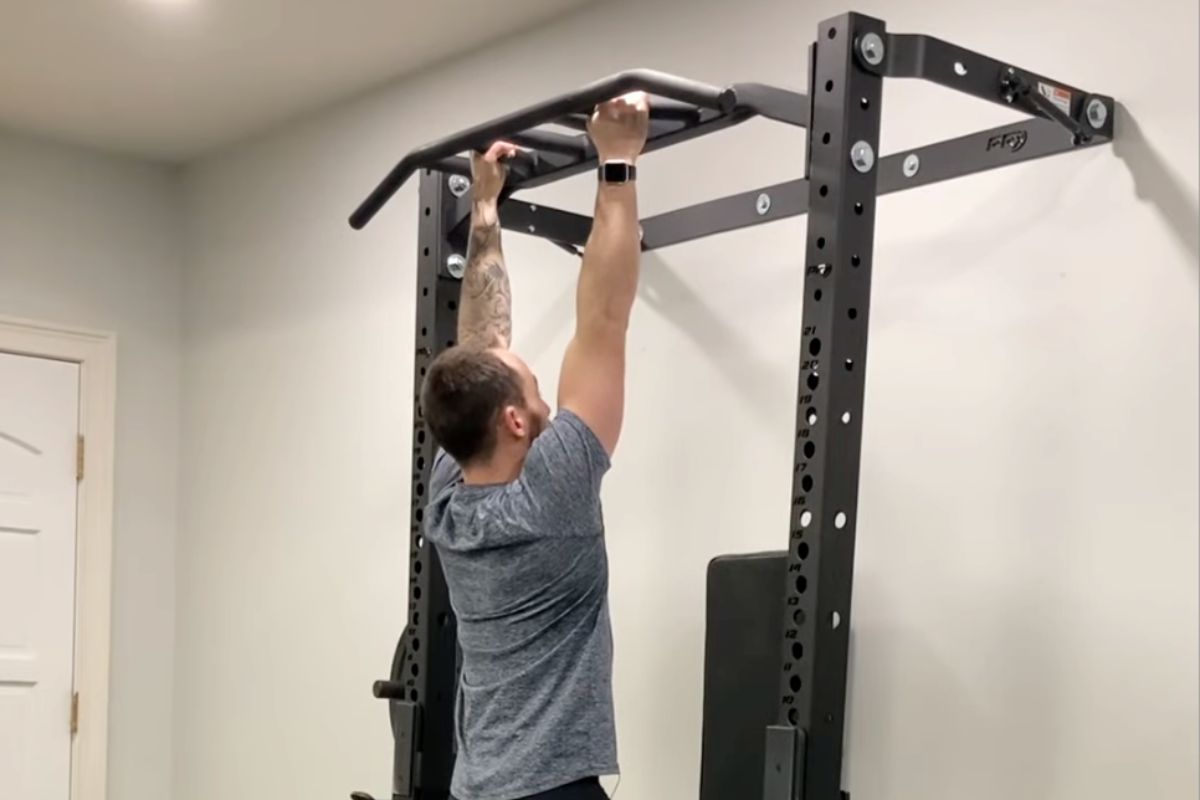When it comes to building a massive, sculpted back, two exercises dominate bodybuilding programs: pull-ups and lat pulldowns. Both are vertical pulling movements targeting the lats, but they offer different training experiences.
Let’s explore what the science says, what top bodybuilders recommend, and how to use both movements effectively to maximize muscle growth.
Contents
How the Two Lifts Work
Pull-ups are a closed-chain movement, meaning your hands stay fixed on the bar while your entire body moves through space. This setup demands full-body control and stabilization from head to toe.
As you fight gravity, you’re not only targeting the latissimus dorsi, but also engaging your mid and lower traps, rhomboids, rear delts, biceps, forearm flexors, and deep core muscles to stay tight and prevent swinging. It’s a true test of upper-body strength and coordination.
Lat pulldowns, on the other hand, are an open-chain movement—the bar moves while your body stays put. That distinction makes pulldowns more accessible, especially for beginners or those unable to perform multiple pull-ups.
You can adjust the resistance in small increments, allowing for progressive overload, higher rep ranges, and a strong mind-muscle connection. Pulldowns are also useful for isolating the lats without the need to lift your bodyweight.
Muscle Activation: What the EMG Says
Electromyography (EMG) studies show that lat activation is nearly identical in both pull-ups and pulldowns—assuming grip width and hand orientation are the same.
However, pull-ups go a step further. Because you’re hanging freely, your core, glutes, and stabilizing muscles—like the external obliques and rectus abdominis—kick in to control your body position and prevent momentum-based movement. This added demand makes pull-ups a more comprehensive upper-body exercise.
So while both exercises hit the lats effectively, pull-ups offer more total-body activation, making them more bang for your buck in terms of overall muscular engagement.
Joint Stress & Injury Management
Pull-ups require a full overhead shoulder range and solid thoracic mobility. If your lats are tight or you have nagging elbow or shoulder pain, this movement can be uncomfortable—or even counterproductive. There’s little room for modification; you’re either strong enough to do the rep or not.
Lat pulldowns, however, are much more forgiving. You can adjust grip type, lean back slightly, or stop just short of your chest if needed. These modifications help reduce joint stress while still allowing for effective back training. For anyone rehabbing an injury, managing chronic aches, or simply needing a low-impact option, pulldowns offer an adaptable solution.
What the Reddit Community Thinks About It
If you browse popular threads in subreddits like r/Fitness, r/Bodybuilding, r/GYM, and r/NaturalBodybuilding, you’ll see a strong consensus: use both pull-ups and pulldowns, but use them for different jobs.
A top comment in r/Fitness puts it simply: pull-ups are “a more functional, essential exercise,” while pulldowns “let you hit the same muscles from a slightly different angle and rack up extra volume.”
(Source: reddit.com/r/Fitness)
A recurring theme? Progressive overload—and how tricky it can be when your bodyweight changes. During a bulk, pull-ups can become harder due to added mass. Pulldowns, however, let you increase the load in small, manageable jumps while maintaining proper form. Conversely, when cutting, many lifters return to pull-ups because a lighter frame makes high-rep sets more doable.
(Source: reddit.com/r/naturalbodybuilding)
Redditors also highlight body mechanics:
- Heavier lifters (>250 lbs) often struggle to do multiple pull-ups but can crush pulldowns without joint pain.
(Source: reddit.com/r/workout) - Smaller or calisthenics-focused lifters prefer pull-ups for skill transfer to moves like muscle-ups or front levers.
On the mind–muscle connection front, some say pulldowns provide a stronger lat “feel” thanks to the stable seat and thigh pad. Others swear that slow, strict pull-ups light up their mid-traps and rear delts more effectively. That said, several experienced Redditors remind us that EMG studies show no major activation differences, provided form and grip are matched.
(Sources: reddit.com/r/bodyweightfitness, reddit.com/r/Fitness)
Programming advice from Reddit coaches is consistent:
- Begin with weighted pull-ups for strength
- Add bodyweight or band-assisted pull-ups for volume
- Finish with 8–15 rep pulldown sets for hypertrophy and pump work
This format balances recovery, joint stress, and training stimulus across multiple rep ranges. For beginners working toward their first pull-up, the advice is simple: combine eccentric pull-ups, resistance bands, and pulldowns until you can complete consistent, clean reps.
✅ Takeaway from Reddit Lifters
- Pull-ups: Excellent for strength, athletic carryover, and full-body engagement
- Pulldowns: Better for high-rep hypertrophy, load control, and joint friendliness
Don’t pick one—use both, rotating based on your goals, phase of training, and how your body feels.
Practical Programming Guidelines
(Sources: StrongerByScience.com, BreakingMuscle.com, ACEFitness.org, Reddit Fitness Communities)
Early Stages (0–5 strict reps):
Center your vertical pulling around lat pulldowns to build foundational strength and volume. Add eccentric-only or band-assisted pull-ups to develop motor control, grip endurance, and familiarity with the movement pattern.
Intermediate (5–12 strict reps):
Alternate your sessions—start one day with weighted, low-rep pull-ups and another with moderate to high-rep pulldowns. This blend trains both relative strength and muscular hypertrophy.
Advanced (12+ strict reps @ BW):
Cycle multi-week training blocks:
- In a strength block, prioritize weighted pull-ups (e.g., 5×5, leaving 1–2 reps in reserve), then finish with pulldown drop sets.
- In a hypertrophy block, lead with high-volume pulldowns and use pull-ups as finishers or mechanical drop sets.
A Two-Day Sample Split:
| Day | Main Lift | Back-Off Work | Accessory Pull |
|---|---|---|---|
| Pull Day A | Weighted Pull-Ups 5 × 4–6 | Lat Pulldown 3 × 10–12 | Chest-Supported Row |
| Pull Day B | Heavy Pulldown 4 × 6–8 | Bodyweight Pull-Ups AMRAP | Face Pulls |
Prefer prose? Try this: On Day A, start with heavy pull-ups and follow with pulldowns and rowing. On Day B, lead with heavy pulldowns, then go to failure on pull-ups, and finish with rear-delt accessories.
Bottom Line: Pull-ups and lat pulldowns both build your back, but in different ways. Use them together, tailor them to your current level, and adjust for long-term progress and joint health.


